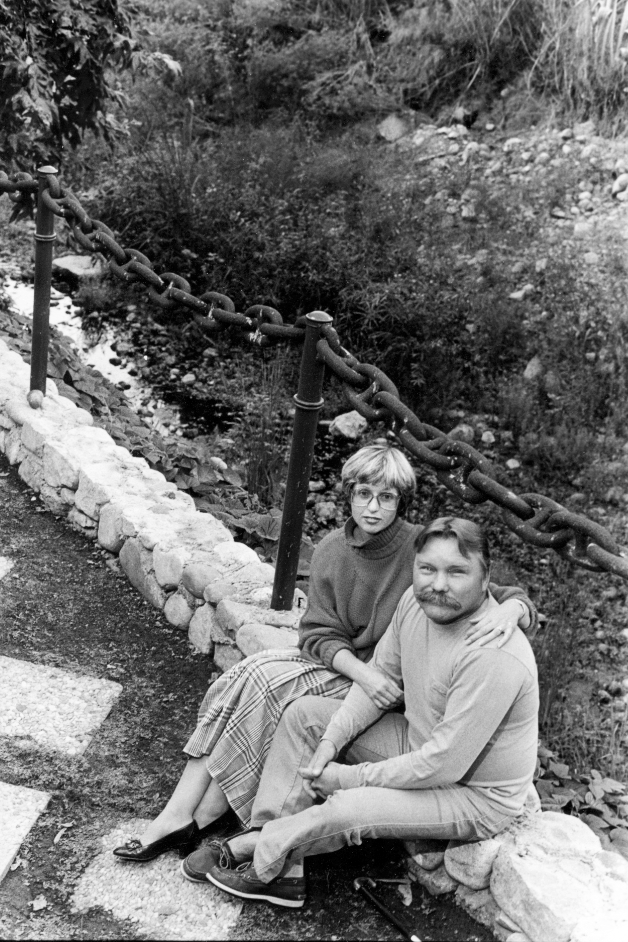Battle to Save Santa Barbara’s Mission Creek
How Blind Cabinetmaker Bruce Munson Fought the Army Corps of Engineers and Won—Almost
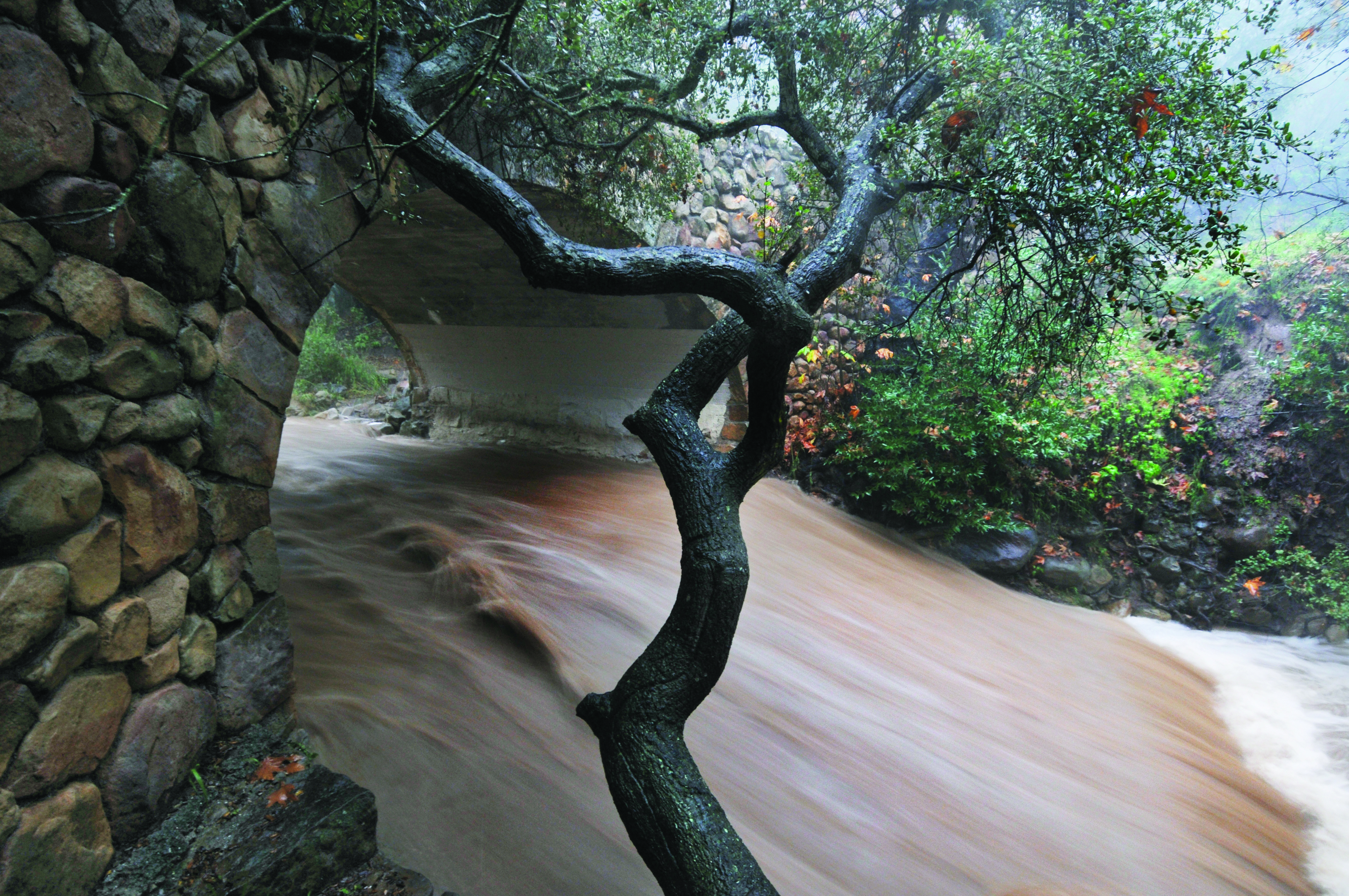
There’s something about a creek.
When I was a kid growing up in the suburbs of Washington, D.C., creeks were where we went to blow stuff up, strapping cherry bombs and M-80s to the backs of model aircraft carriers we’d painstakingly glued together. Such detonations — so wonderfully stupid — sadly failed to transform me into a latter-day John Muir, the visionary naturalist and author who founded the Sierra Club. But even so, the experience created an opportunity for accidental discovery. Creeks were where — we would observe — tadpoles turned into frogs, minnows into fish. Their journey, not coincidentally, was our own. Over time, we saw how running water carved its own course. Likewise, we caught glimpses of small four-legged creatures before they wound up, too frequently, as road kill. In the hyper-perpendicular grid of our suburban landscape, creeks provided a glimpse of nature. They also offered a genuine refuge for wildness, however contained, both their own and ours.
In the City of Santa Barbara, there is Mission Creek. Visually, it functions as the riparian nose on the city’s face. Beginning in the Santa Ynez Mountains, Mission Creek makes its way past the mission for which it was named and through the backyards and church parking lots —“Díos Es Bueno”— of downtown Santa Barbara, emptying into the waterfront. Several other creeks also run throughout the city. But it’s along the banks of Mission Creek that the Chumash decided to build their capital of Syuxtun, where they resided since 1542 and probably thousands of years before that. Some scholars have suggested it’s one of the most continuously human-occupied sites anywhere in the continental United States. Likewise, it was near its banks that Spanish colonists built their mission. Not coincidentally, Mission Creek is the only Santa Barbara stream that — at least until recently — offered a reliable pathway for the endangered steelhead trout.
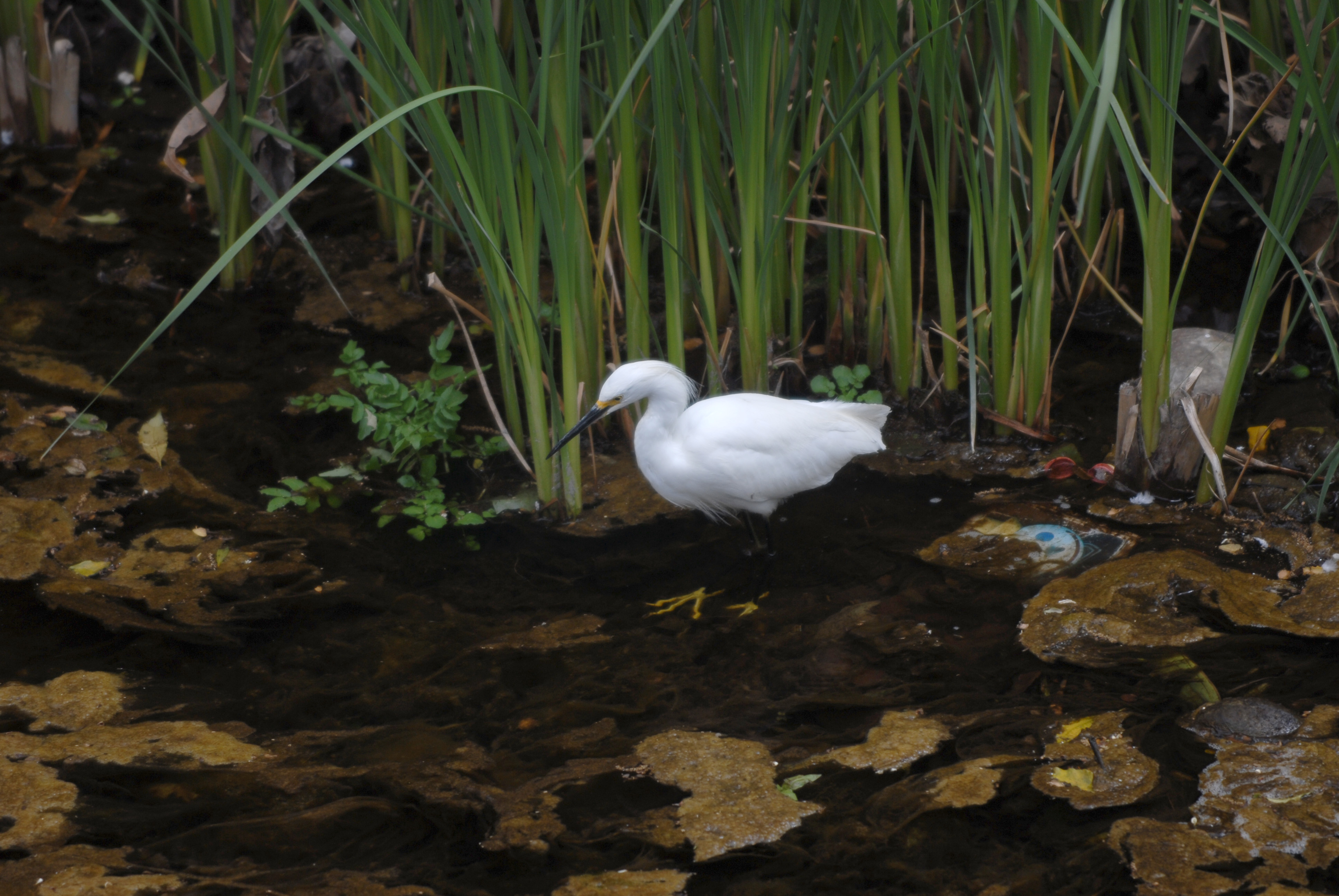
The fate of Lower Mission Creek — from Canon Perdido Street to the ocean — is well worth pondering as Santa Barbarans prepare to celebrate their first Earth Day in the time of Trump. Environmentally, Mission Creek is the opposite of a slow-moving train wreck. Instead, it’s a glacially moving tale of a train wreck thwarted. Though far from over, it’s a victory to be savored and celebrated for its utter improbability.
The Battle Begins
When I moved to Santa Barbara in the 1980s, the powers that be — led by the U.S. Army Corps of Engineers and S.B. County Flood Control — had already decided that the bottom 1.3 miles of Mission Creek needed to be paved with concrete — from bank to shining bank. This, they were certain, was the best plan to protect residents and property owners from the occasional violent furies of flash flooding. With varying degrees of reluctance and resignation, the Santa Barbara City Council and County Board of Supervisors signed off on the plan.
It was, everyone agreed, the only way.
Well, not everyone.
During the long battle to save the creek, many eco-warriors took up the flag, some playing major roles. But were it not for the last-minute interventions of Bruce Munson — a blind cabinetmaker and cantankerous visionary whose name has been largely lost to the winds of history — Mission Creek would have become a concrete alley.
It was the Army Corps of Engineers’ bad luck that Munson and his wife, Sarah Duvall, happened to buy a home on the 700 block of Castillo Street in 1985. Their backyard didn’t just overlook Mission Creek. It was Mission Creek. Inside, their home was a happy riot of oak furniture that Munson — who went blind in his late twenties from diabetes — built himself despite his handicap. Outside, the couple’s yard was an explosion of morning glory and trumpet vines run amok. Munson and his wife would sit on a white wrought-iron bench overlooking the creek and soak up the music created by water pouring over the waiting rocks.
No one, it seems, had informed Munson and Duvall about the Army Corps of Engineers’ project. Not that it would have mattered if they had. Anyone who was anyone had already signed off. That included the downtown property owner Tony Romasanta, who reportedly had more money than God and was twice as powerful. It also included Jim Stubchaer, director of County Flood Control, who was a brilliant engineer but ramrod stiff and decidedly old-school when it came to environmental considerations. But in the classic fashion of many not-in-my-backyard revolts, Munson, with the strong assist of Duvall, entered the fray at the 11th hour.
Sink or Swim
Munson couldn’t care less that he was a Johnny-come-lately. As soon as he learned about the concrete, he organized a neighborhood committee to save the creek. Inspiring or infuriating depending on one’s perspective, Munson was not the least bit cowed by the high-octane credentials of the project’s supporters. In fact, he relished the conflict.
Munson wasn’t your typical tree hugger. He grew up in the San Fernando Valley and as a young man rode Harleys with members of the Hells Angels in San Bernardino. Custom painted onto the gas tank of his hog were the words “Toad à la Mode.” Munson was diagnosed with diabetes at age 3, and his eyesight was deteriorating rapidly by his early twenties. Then studying cabinetmaking, Munson underwent surgery at UCLA to save what vision he had left. Instead, he lost everything.
Munson could sink, or he could swim. He chose to do the latter. His uncle, an expert toolmaker living in Goleta, fashioned a series of metal measuring devices with notches gouged into the surface every 16th of an inch. He fashioned a series of wooden blocks to help Munson push planks of lumber into the jaws of the table saw. By dint of determination — and much assistance from his wife, whom he initially met as a therapist for the blind — Munson went back to work building cabinets. He operated out of a shop in a corrugated industrial warehouse on Ortega Street, now the construction site of a three-story housing development. He could see better, he explained, imagining what he was working on in his mind’s eye than he ever could with his two eyes.
Joining the Fray
Soon allied with Munson was the equally stubborn Brian Trautwein, then with the Urban Creeks Council. As a 21-year-old nature boy, Trautwein — now a fixture with the Environmental Defense Center — was presumptuous enough to call the cops on a County Flood Control bulldozer about to rid San Jose Creek of flood-inducing impediments like trees, plants, and vegetation. The cops begged off, but a state Fish and Game warden — armed with badge and gun — unceremoniously chased the dozer off. In the intervening 30 years, Trautwein hasn’t stopped agitating on behalf of creeks. But in Munson’s presence, even Trautwein was awed. “Bruce had the heart of a superhero,” he gushed. “And the body of a superhero, too.” During creek cleanup exercises, Trautwein remembered, Munson was assigned to the bridge overlooking the creek, armed with a thick rope. Trash too heavy to be crammed in a bag would be tied to Munson’s rope. “There would be engine blocks and motorcycles down there,” Trautwein recalled. “All kinds of stuff. Bruce would lift up whole motorcycles out of the muck all by himself.”
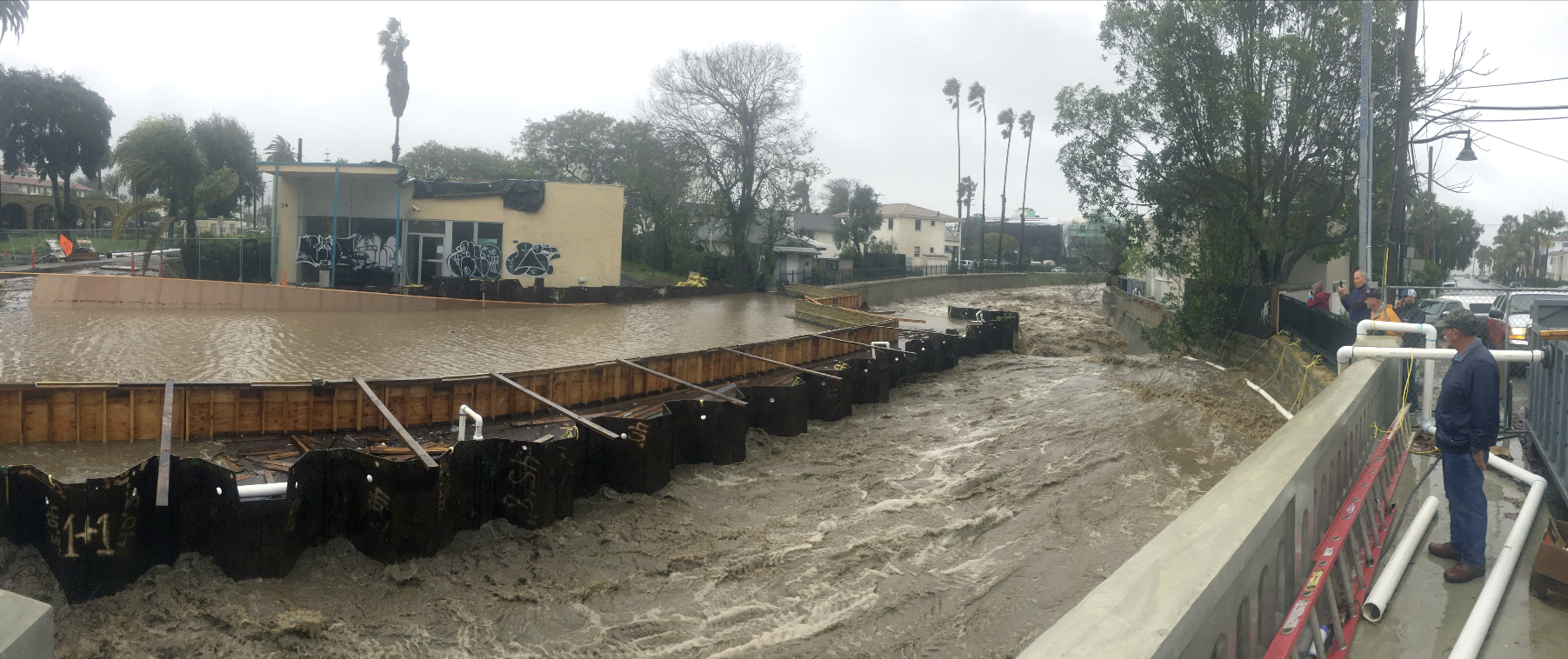
When [the Army Corps] added water [to their Mission Creek model], their engineers stumbled onto a terrible truth: Their project, it turned out, would actually make flooding in the lower stretches of the creek much worse.
Others began to join the fray to save the creek. Bob Sollen — who was then of the Sierra Club and as soft-spoken and polite as Munson was brash and, on occasion, confrontational — was a former News-Press reporter who covered the 1969 oil spill with a quiet heroism and attention to detail that made him a presence to reckon with. Hydrogeologist Mike Hoover — an outspoken former naval academy wrestling champ — provided critical technical advice that helped poke holes in the Army Corps’s plans. “We was warriors! Giant killers,” Hoover said, and “Bruce was the biblical David. Occasionally, people have won battles with the city, but very few could beat Tony Romasanta. Bruce did.”
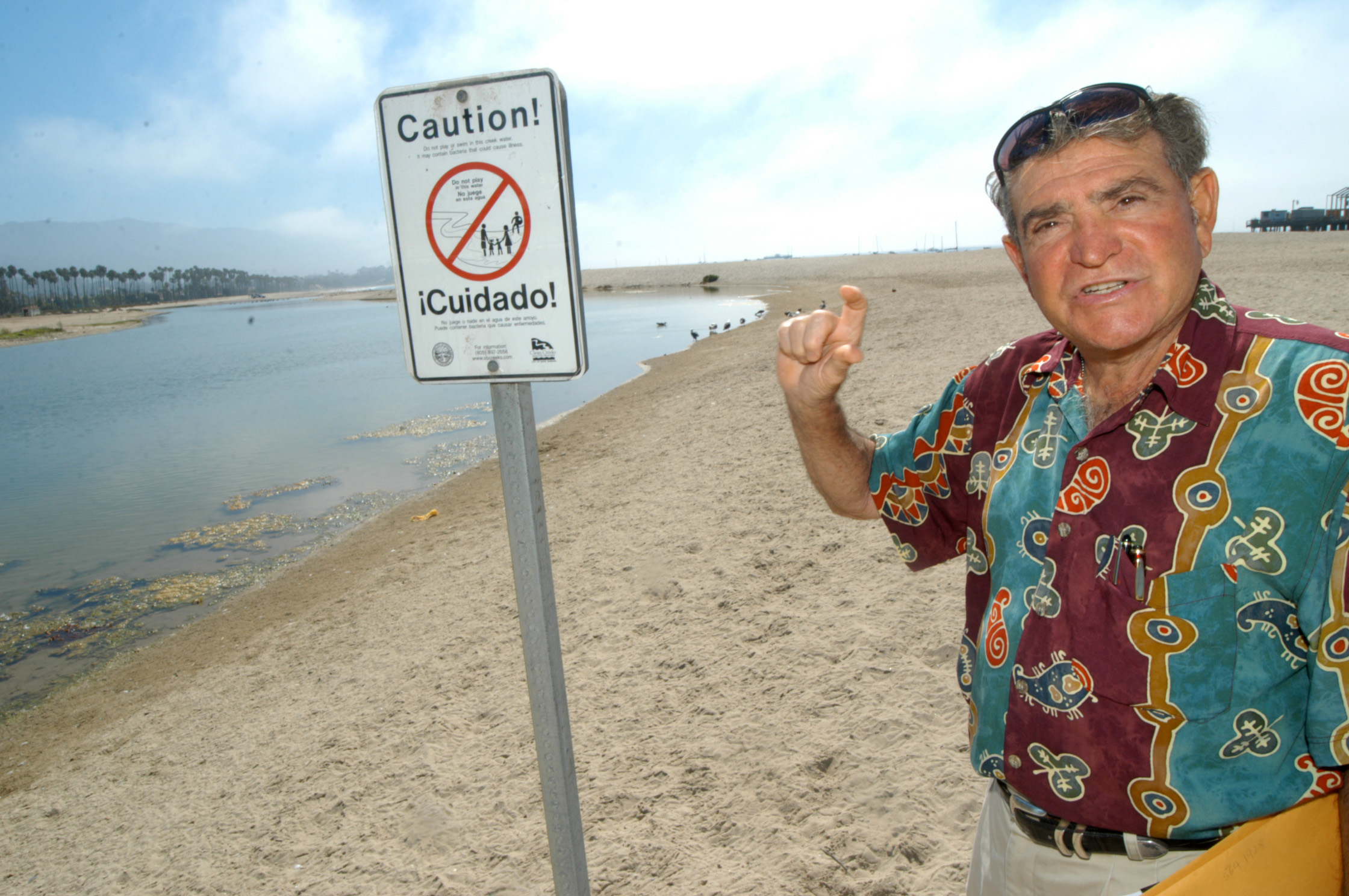
Munson started off collecting signatures. Then he took them to former Republican congressmember Bob Lagomarsino, who sat on the Ways and Means Committee, which controlled the flow of federal dollars. The take-it-or-leave-it leverage enjoyed by the Army Corps stemmed from the fact it was funding the project, which at the time weighed in at $12.7 million. The Army Corps had rigidly strict guidelines for what kinds of projects it could fund — nothing less than 100-year floods. In addition, the Army Corps defined a 100-year event far more drastically than even other federal agencies, such as the Federal Emergency Management Agency. To achieve this level of flood protection, there was little wiggle room in Army Corps calculations for less draconian designs and more environmental protection. For City Hall to walk away from the project would be to risk inevitable litigation if and when it ever flooded. But when presented with the signatures Munson and Duvall collected, Lagomarsino put project funding on temporary hold. This didn’t kill the project outright. It bought time to look at alternatives.
Just Add Water
By the beginning of the ’90s, a softer environmental ethic invaded the realm of public works. The county supervisors, now controlled by a green-leaning majority, wanted flood control but not a skateboard park. Then a crippling drought forced the realization that the concrete creek bottom proposed by the Army Corps would prevent groundwater recharge. No one wanted to tell the Army Corps to take a hike. But in the face of environmental opposition, the movers and shakers started looking for more options.
The City Council and county supervisors authorized a study of flood-control alternatives for Lower Mission Creek. The results suggest that another approach might work. Armed with this information, County Supervisor Tom Rogers and Santa Barbara Mayor Harriet Miller agreed to ask the Army Corps to take another look. In response, the Army Corps built a miniature model of Mission Creek and inserted its flood-control plan into the lower stretch. When they added water, their engineers stumbled onto a terrible truth: Their project, it turned out, would actually make flooding in the lower stretches of the creek much worse. It turned out that sediment would accumulate at the base of Mission Creek, acting like a giant plug. The only way to prevent this scenario would be to construct a massive sediment-debris basin in Oak Park or Rocky Nook Park. When Colonel Robert Van Antwerp of the Army Corps delivered this news to City Hall, Pat Kelly, who would later become the city’s public works czar, remembered thinking: “Are you brain-dead? Has anyone been to Rocky Nook Park? Does anyone know how beautiful these parks are?”
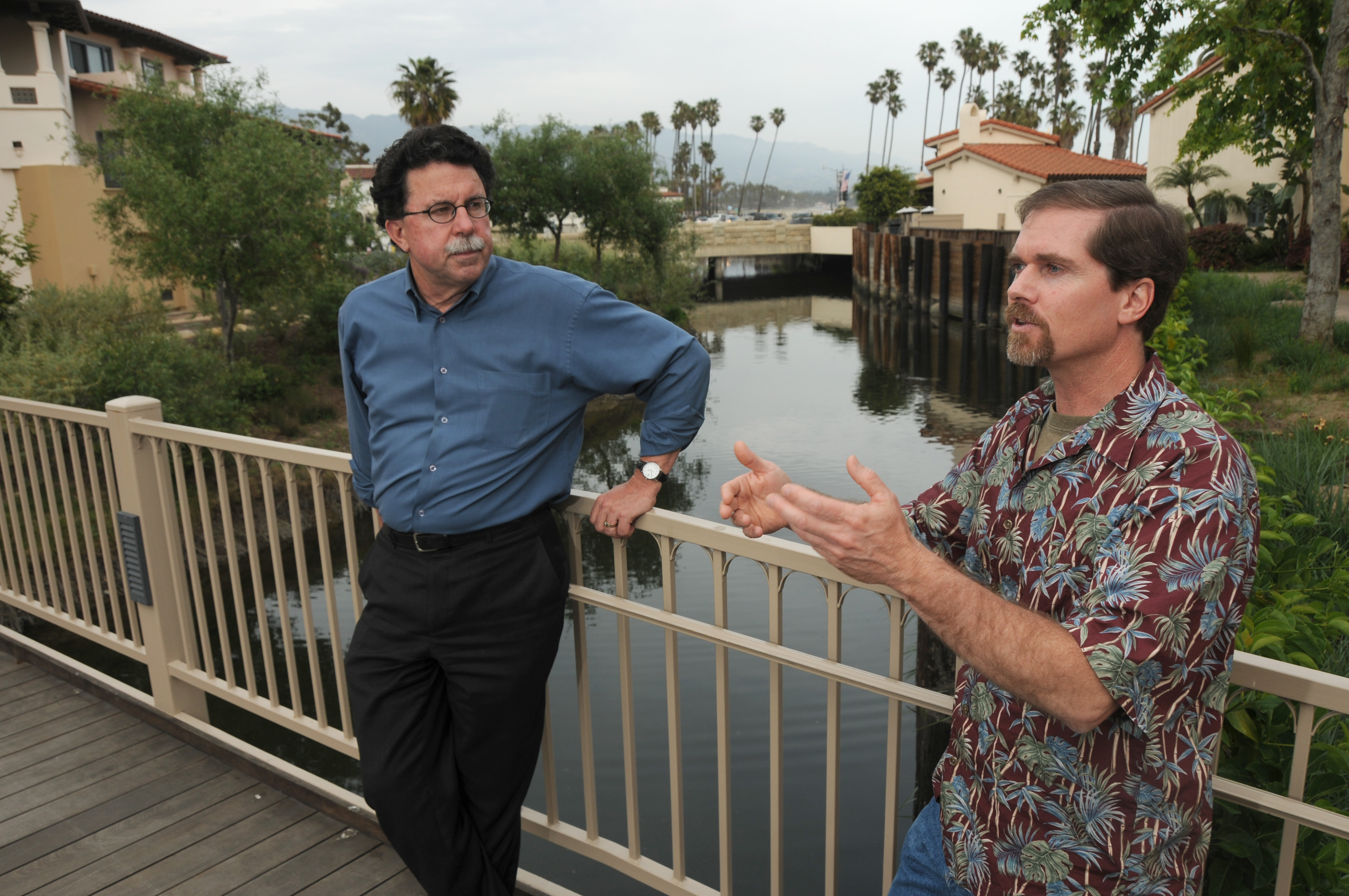
A Better Way
The Army Corps’s new proposal was dead on arrival. From the ashes emerged the political equivalent of a painful and protracted group therapy session: the Lower Mission Creek Consensus Group. All the competing stakeholders who hitherto only growled at one another were forced to sit across the table to see if anything could be salvaged from the wreckage. Munson did not participate. Trautwein, however, did. By then, there was a new head of County Water and Flood Control, Tom Fayram. Like Trautwein, Fayram grew up in Goleta. His parents and Trautwein’s parents were friends who socialized regularly. That helped. Helping more, said Fayram, was how expertly Supervisor Naomi Schwartz kicked ass. “She called out the Army Corps. She called out Flood Control,” he recalled. “But she also called out the enviros. She told them, ‘You need to step up here, too. You need to give on something.”

Ultimately the consensus group agreed to build a flood-control project that protected against a 20-year flood instead of the Corps’ 100-year calamity scenario. Kelly noted that the numbers surrounding flood-control plans are sometimes overstated. “Even a 10-year project provides about 75 percent of the protection of a 100-year plan,” he said.
The new plan would allow Mission Creek to retain a natural bottom — no concrete — thus accommodating groundwater recharge and steelhead trout. It would range in width from 55 feet to 30. The banks would be vertical in some places, sloped in others. The sides would jut perpendicularly to the channel bottom in most places but be lined with riprap, rocks, and planted vegetation where possible. It would be light-years from the cement overcoat first proposed.
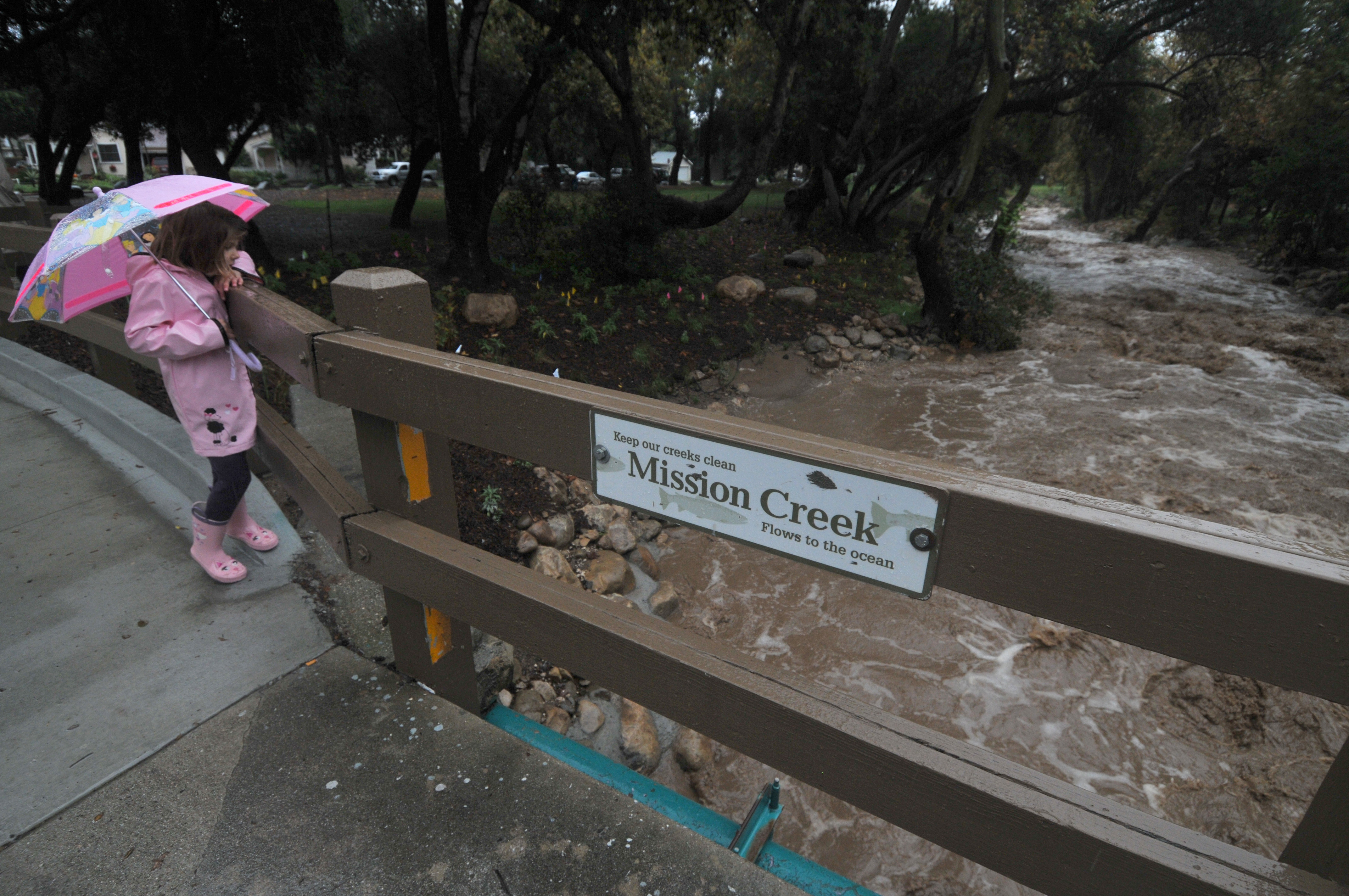
According to Kelly and Fayram — who would later emerge as major players in the project — this was the first time they’d ever heard of the Army Corps budging on such a central point. By building for a smaller flood event, more environmental accommodations could be incorporated into the design. However wonky it sounds now, at the time it was historic. “It changed the way things happened at the Corps,” Fayram said. Kelly, who cut his teeth professionally engineering concrete channels in the San Fernando Valley, would take exception to the term “flood control,” calling it “arrogant.” “You can’t really control floods,” he said. “You can’t control nature.”
Cash Flow
Incidentally, the Army Corps of Engineers never spent a single cent on getting the project built. That burden — now in excess of $100 million — eventually fell to the County and City of Santa Barbara. But along the way, the Army Corps spent gobs on studies, reports, and designs. Most critically, it got an environmental document approved for the Lower Mission Creek, without which absolutely nothing could have happened. Given that steelhead trout and tidewater goby — which both inhabit the creek — were declared federally endangered species as the project was wending through environmental review, this accomplishment is gargantuan.
It wasn’t that the Army Corps ever declared it would not fund the project; it’s that there were always more pressing projects to finance, such as the disappearing Florida Everglades, or the invasions of foreign nations: Iraq, Afghanistan, and Iraq again. Eventually, Fayram and Kelly got tired of waiting and figured out how to find other funding. They would start at the bottom of the creek and work their way up — improvisationally — as resources allowed. The simplified plan called for eight new and wider bridges from Cabrillo to Canon Perdido. Of those, Cabrillo is still under construction and two more — Gutierrez and De la Guerra — remain to be built. Fayram and County Flood Control would take care of the sides and creek bottom. As an engineering collaboration, their dance rivals anything performed by Fred Astaire and Ginger Rogers for complexity, precision, and length of time. Exactly when the Lower Mission Creek Flood Control Project will be finished remains a matter of speculation. The final project description got final approval in 2009. Construction began late 2012. The best guess is 15 years.
Steelhead Situation
Kelly and Fayram regard this project as a success, contending it blends vastly better flood-control protection with the community’s environmental values. Trautwein of the Environmental Defense Center is a bit more qualified in his praise. “You can’t really call it a creek restoration project,” he stated. “But it’s definitely enhanced the creek’s riparian elements.” Birds and fish will be able to reclaim Lower Mission Creek, but possums, raccoons, coyotes, and other wildlife will have a hard time finding a toehold on the steep perpendicular creek walls. And the incessant pressure from urban development offers little hope that the riparian habitat along the creek banks will be expanded.
Trautwein, an ardent proponent of steelhead restoration efforts, noted that not a single steelhead made its way up Mission Creek during this year’s heavy winter storms. He said no steelhead have been seen coming up Mission Creek since 2012, though for seven of the previous 10 years there had been. Part of the problem was the drought. Trautwein also blames City Hall for turning off its small contribution of water from the Mission Tunnel to Mission Creek because of the recent drought. Before that, he said, there were steelhead as big as 29 inches.
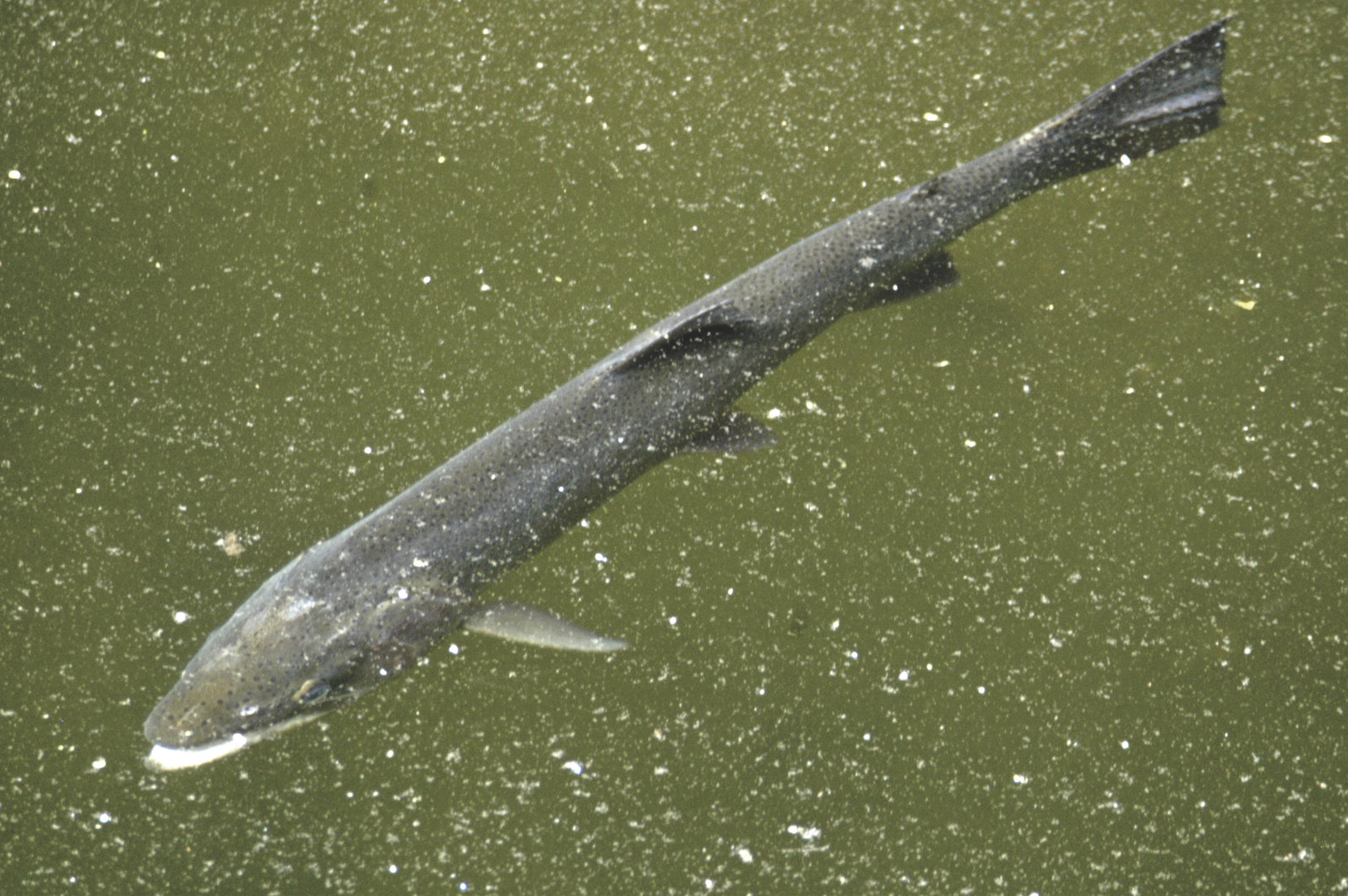
Trautwein has been part of efforts to clear the creek of impediments from Cabrillo Boulevard all the way to Rocky Nook Park. City creeks czar Cameron Benson — who used to work with Trautwein at the Environmental Defense Center — was instrumental in gouging a steelhead-friendly channel into the paved stretch of creek running about a mile north from Canon Perdido Street. In addition, Benson helped clear out fish-passage barriers blocking steelhead — which can achieve speeds of more than 20 feet per second for short bursts — from getting past Oak Park. These improvements were made, however, after the drought started. To date, no fish have been witnessed taking advantage of the amenities.
Under Benson, water quality in city creeks — Mission Creek in particular — has improved dramatically. Bacteria associated with human feces in the water have been curtailed, and about 55 tons of trash are yanked out of city creeks a year. “The situation is pretty dire,” Trautwein said.
Live Stream
Environmental considerations remain, as always, a matter of considerable controversy. But today, such considerations have not only a foot in the door but also a seat at the table. And Mission Creek looks a lot more like a creek than the cement cemetery originally planned for it more than 30 years ago.
Coincidentally, late supervisor Naomi Schwartz got a commemorative plaque pasted onto the front of the County Flood Control building late last week. She richly deserved it. But Schwartz would never have had the opportunity to apply her formidably creative political mojo to the riddle of Mission Creek had it not been for Bruce Munson.
Munson died in 1998 not long after moving with his wife to Washington State from diabetes-related complications. He was 50 years old.
Sometime before the Lower Mission Creek Flood Control Project is finished, I’m hoping the powers that be see fit to dedicate a space along the banks to acknowledge Bruce Munson’s role. Maybe a wrought-iron bench where people can perch, soaking up the music made when rushing water collides with waiting rocks.
There’s something about a creek. It doesn’t take a blind cabinetmaker to understand this. But in Santa Barbara’s case, it helps.
